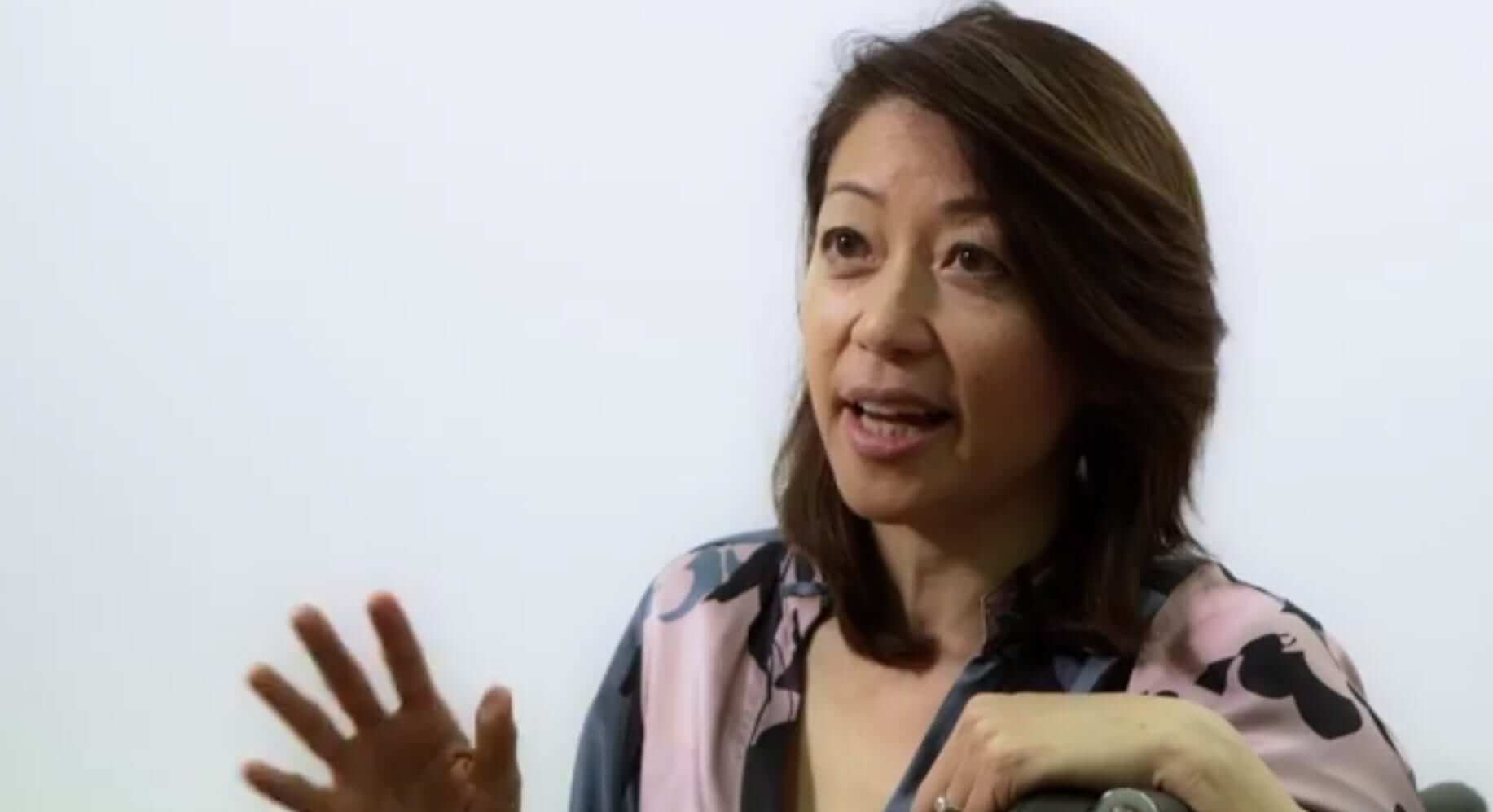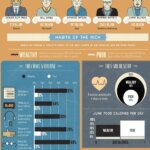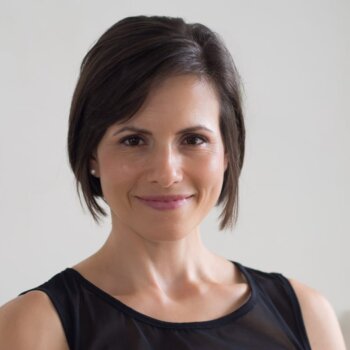Rosaline grew up in South Central Los Angeles during the Watts Riots as one of the few Chinese kids in an all-black neighbourhood. Since Rosaline was different and didn’t speak English, she was often bullied so she learned to rapidly judge whether to stay and fight or flee. Her family was quite poor as her parents were both illiterate immigrants from China.
Rosaline studied Cybernetics at UCLA after babysitting for the first professional she ever met who happened to be an engineer. Upon graduation from UCLA, she took a job in Iowa at age 21 to supervise 33 staff in a P&G manufacturing plant. There she learned that she needed to become a better business leader to be effective. She won a full fellowship to attend Columbia Business School in New York City for her MBA and afterwards went to work for Bankers Trust where she progressed to different roles including new product development, operations, business process re-engineering, new markets, marketing and strategic planning and service quality improvement across the bank.
In 1996, both Rosaline and her husband were each given expat opportunities with their firms in London and prepared themselves for the move. However, the day the packers came to move all their belongings, they were told to move instead to Singapore.
After moving to Asia, she invested in a friend’s start-up which she subsequently launched before being recruited to a second dotcom funded by Bain Capital. She spent weekdays building the start-ups in Kuala Lumpur and weekends in Singapore with her family, but returned after discovering her daughter had epilepsy and a learning disorder. Once her daughter was diagnosed and settled into a special needs school, Rosaline joined one of her insurance clients in a part-time project role to build e-business in Asia. This only lasted 6 weeks before she took over running Singapore and regional business development and operations.
Mercer Marsh Benefits hired her to lead employee benefits and healthcare for the region after she disintermediated many of their corporate worksite clients. Rosaline spent 8 years growing the 14 countries 800% into the largest employee benefits brokerage and HR benefits consultancy in Asia Pacific. Her time at Mercer pointed her to an opportunity to deploy technology to resolve HR’s unmet needs in Asia.
How did you come up with the idea of CXA?
When I was at Mercer, I spent a great deal of time talking to HR across the region about the pain points they experienced administering employee benefits for their firms. Since I grew this business by throwing smart people at the problems, I constantly begged NYC headquarters to fund an IT platform that could automate and scale the manual solutions we put in place to solve HR’s pain points. But in the end, I had to leave to start up my own business to fulfill my dream of disrupting the industry with an end-to-end employee benefits platform.
What exactly is CXA?
CXA is Asia’s first employee benefits marketplace, which aggregates all the players including employers, employees, insurers, hospitals, clinics, wellness and fitness providers. We are set to transform the industry by deploying technology that channel’s a company’s existing insurance spend into improving workforce health & satisfaction and reducing HR administrative workload while capping the rising cost of healthcare.
From the employee perspective, there’s currently wastage for singles who don’t need that much insurance and for working couples with duplicated spousal coverage from which they can now opt out. Each employee chooses what they need in terms of insurance protection vs. wellness and disease management. Employees appreciate this since they have a bucket of free money for childcare, pediatrics, yoga, TCM, personal training, stress management, healthy eating or diabetes management.
We help employees select their insurance & wellness benefits based on their lifestage & lifestyle. They become more personally engaged to take charge of their health after they vividly see the impact of their bad lifestyle habits on photos of their face. Our smartphone apps and cashless provider network eliminates the need for them to pay cash upfront, submit paper claims and the black hole of waiting for reimbursements.
Wellness providers get guaranteed access to the workplace since employees enrolled for their insurance benefits and would forfeit their flex dollars if they are not spent by benefits year-end.
We also private label for banks and insurers who now have a channel to electronically distribute new “Health, Wealth & Lifestyle” services to their captive corporate SMEs and their workplace employees.
Could you walk us through the process of starting up CXA?
When I left Mercer, I knew I was going to build a disruptive competitor, yet was contractually forbidden from soliciting employees and clients for a year. So during my year in hiding, I secretly negotiated the acquisition and recruited a team to build the platform from the ground up based upon in-depth understanding of group insurance, flexible benefits, health, behavioural science, HR practices and enterprise-grade technology. So I could not just hire newbies but had to creatively source talent with very specific domain knowledge. I fervently believe that it was destiny that brought this invaluable team together!
Did you find anything particularly difficult during the startup?
In addition to the bank acquisition loan, I had initially set out to pump in only US$1 million and raise the remaining needed through investor funding which I had already lined up to purchase Pan, Singapore’s largest home grown insurance brokerage. But once the regulator restricted approval of the acquisition to just one shareholder which was me, I had no choice but to pump in the entire $US 4M as the brokerage is a critical component of our business model. Having the brokerage gives us the license to sell insurance and earn commissions to fund CXA’s platform services.
How has it been like managing the business since?
It has been an exciting and phenomenal journey as I get to work with some of the best and brightest individuals in who share my passion to transform the industry. We get to make rapid decisions and adapt to market needs rather than making daily morning and night conference calls to corporate HQ to explain/justify our recommendations and then waiting months on end for permission. It’s been so much easier to realize my vision in a start-up instead of at a large multinational organization saddled with bureaucracy and politicking.
How was the initial reaction from the customers?
We followed lean start-up methodology by getting valuable feedback from potential HR buyers, insurers and bank distributors on our iterative prototypes during the 1-year development period. Thus we were able to launch fully formed with a working platform by February 2014 when the regulator finally approved our brokerage acquisition. At that point, we quickly piloted our wellness services with 3 hand-picked corporate clients from different industries and countries. These clients have since invited us to speak at various industry forums and we’re now in the process of implementing additional countries and services for them. We also had overwhelmingly positive responses from the 300 companies who attended our inaugural breakfast briefing and have a pipeline of flexible benefits implementations scheduled every month for the rest of the year.
What can you tell us about the industry?
Employee Benefits Value Chain
HR decision-makers have to deal with many vendors in order to administer employee benefits for their firms. This includes intermediaries such as brokers or HR consultants who get quotes from the insurance companies. The insurers work with hospitals and managed care networks of GP and specialist clinics. In addition, HR has to negotiate directly with gyms, employee assistant programs, chronic disease management and other providers for employee wellness programs. Since the insurance and healthcare industries are still operating on a paper-based model, they are ripe for transformation. HR experience many pain points including insurance/benefits costs which rise faster than compensation yet are unappreciated by employees, worsening employee health yet HR do not have the ROI data to prioritize wellness interventions and heavy administrative workload for HR.
What is your strategy against your competition?
Yes we have many competitors in the employee benefits industry in Asia. These include the global multinational and local HR consulting firms, brokerage houses and insurers who work directly with corporate clients.
Most of our competitors focus on getting good insurance packages for companies. CXA’s services are much more comprehensive as we repurpose a company’s existing spend in exchange for flexible benefits, workplace wellness, data analytics and benefits administration. CXA works at the individual and aggregate firm level to improve workforce health with personalized recommendations and tracking of progress against goals.
CXA’s marketplace simplifies the entire value chain and eliminates time consuming paperwork with online selection and claims, thus saving valuable time and resources for HR departments, speeding up the claims process for employees and capping rising healthcare cost.
Our strategy is to disrupt the industry by changing the entire business model and value proposition for employee benefits intermediaries. It’s similar to what happened to other intermediary businesses such as travel agency or stock brokerage. We’re first-to-market and plan to rapidly scale across countries and all the different stakeholders to create significant barriers to entry for copycat followers.
Have you developed any industry insights that you could share?
I wrote many industry white papers while at Mercer including “Containing Healthcare Cost During the Downturn in Asia” that won 2010 Contributor of the Year for World@Work’s academic journal. CXA has just released 3 research papers including a Flex & Health Survey, The Future of Healthcare in Asia and Know Your Health.
Recent insights include: 85% of respondents expressed high concern about the health of their employees, indicating a need for wellness and health intervention measures.
How have you managed to stay relevant in this industry?
I make a point of researching competitors around the world and talking to all the different stakeholders in the industry in order to understand their pain points, unmet needs and especially to anticipate future trends. This includes spending time with HR decision-makers, senior executives and company owners, insurers, healthcare practitioners, wellness providers, government health agencies and new IT healthcare start-ups.
What are your future plans for CXA?
We plan to rapidly scale up and launch the platform across 11 key countries in Asia through partnerships with brokers, insurers and banks to reach their corporate base.
If you could start all over again, would you change anything about your approach?
We initially outsourced our development to an external IT vendor in exchange for equity. I learned that there is no free lunch as they did not understand our business and was slow to respond to our needs. So if I could change anything, I would have built an in-house IT development team to work closely with our product development team from Day 1.
What do you think about startups in Asia?
The quality of the startups in Asia has improved significantly since I was last involved during the dot-com era in 2001. For example, incubator/VC and entrepreneurial landscape is much more sophisticated as the Singapore government has invested significantly to become the Silicon Valley and R&D center of Asia. Singapore is also where most of the global MNCs have placed their regional HQ decision-makers so that means that there’s an ecosystem here that can deploy pan-Asia solutions to the whole region. I definitely want to be part of the power shift from the West to Asia to prove that innovations built here can leapfrog the West.
What are some personal principles or personal values that guide you and your career?
Over the last 18 years in Asia, I’ve focused on start-ups & turnarounds, where I’ve had to build cohesive high performance teams that must execute in order to leave our firms a better place than when we found it.
What drives me to repeatedly seek such high pressure, fast-moving, do or die environments, is that I get to fully understand people’s true character as we toil together in the trenches to transform each industry. Each time, I strive to create a climate that brings out the best in the team and to unleash positive energy and aspirations so that everyone feels that they can achieve the impossible. I actually feel a great deal of fulfillment helping each member of my team maximize their personal potential while building something that’s never been done before
I believe in:
-
Being a great leader and developing other leaders
-
Leading/shaping the industry though innovation and thought leadership
-
Speed to market and agility
-
Work hard/play hard — work should be fun and fulfilling
-
Leaving a lasting legacy
What is your definition of success?
I define success as the ability to leave a legacy with the people you touch while transforming and dominating an industry.
Why did you decide to become an entrepreneur?
Before CXA, I was the COO and builder in two earlier start-ups funded by Vertex, Bain Capital, Credit Suisse and Softbank in the late ‘90s. Because of my daughter’s condition, I had to return to corporate life in Singapore. Now that both my children are grown, I have finally returned to the start-up world which has always excited me.
What do you think are the most important things entrepreneurs should keep in mind?
Being an entrepreneur is not for the faint of heart & those who cannot deal with high stress, ambiguity, long hours, low pay and total commitment.
Entrepreneurs have to be change agents who are able to Inspire and galvanize a team around a shared vision of the business to be an industry trailblazer.
It takes exceptional talent to blast through inertia, remove obstacles out of the way, unleash positive energy & aspirations, implement a succession of quick wins to breed success and eventually build up so much momentum that change is unstoppable.
It’s an emotional rollercoaster with a thousand unknowns where you have to inspire confidence and innovation in the face of hardship and you have to have the resilience to bounce back from every setback and the determination to stay the course for years.
In your opinion, what are the keys to entrepreneurial success?
The key to entrepreneurial success is that you have to get traction & positive cash flow before running out of money. That means that you have to keep your cash burn low while running at warp speed so you have to make difficult decisions along the way as every single person counts. The leader has to ensure everything progresses forward & there’s absolutely no room for politics or excess fat. Everyone and especially the leader must wear multiple heats and be able to rollup their sleeves to work in the trenches.
So in my view, it takes a combination of head, heart and guts. You must not only have a compelling vision, but also you have to commit your whole heart and soul and lead by example to convince others to join in your quest.
Any parting words of wisdom for entrepreneurs out there?
My advise to other aspiring entrepreneurs is that you cannot do it alone, so surround yourself with the best and brightest talent that money can buy as that’s the only way you can ever be successful.





























